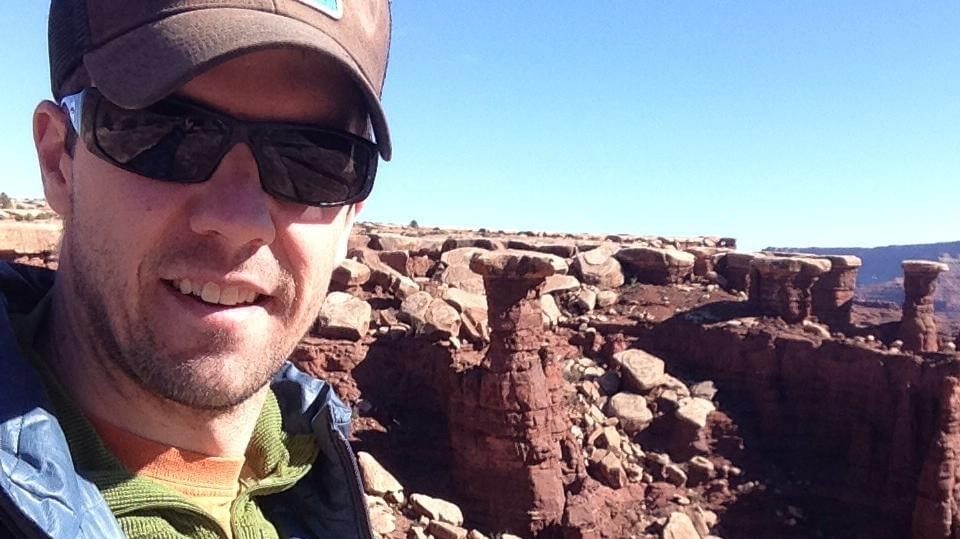Some information may be outdated.
Today we’re talking about the Native American Tribes Upholding Restoration and Education, or N.A.T.U.R.E. program, a science and conservation leadership program for Indigenous college students in the Four Corners region. The program is sponsored by The Nature Conservancy and hosted at the Canyonlands Research Center in Southeast Utah.
In the summer of 2023, seven Native college students from diverse tribal backgrounds, universities and majors spent seven weeks in Southeast Utah in Southwest Colorado. They worked with Indigenous knowledge-holders and scientists, Western scientists and program mentors to learn about this region and to conduct their own original capstone research projects.
Read our interview with two of these students, James Johanntoberns and Shundeen Smith.


Science Moab: Can you tell us more about the N.A.T.U.R.E. program and what that experience was like for you?
Johanntoberns: For me, it was eye opening, getting to travel around the Four Corners region. I enjoyed that experience, and getting to learn new skills that I can incorporate into my academic and professional career was something that I just really held dear. Overall, the experience was amazing. I loved it having a mix of both fieldwork and in-class type of learning. It was a really good blend for me, I will cherish those memories.
Smith: The seven weeks for me helped me see what I can do and how much more I am capable of than I realized, learning face-to-face with other scientists and even other Indigenous elders, whom I got to sit down with and learn so much from them. It was overall just really, really great and eye-opening, and I recommend it.
Science Moab: Can each of you tell me about the topic that you chose to research, why you chose it and how you conducted your research?
Johanntoberns: My capstone project was done on how ant colonies impact biocrust and dryland ecosystems. What initially started that entire idea was a simple question that I had while we were out at the Dugout Ranch: how do burrowing insects impact biocrust?
No one could give me an answer and even doing some research on my own, I couldn’t find a lot of studies done on the subject. The only things that people could give me were theories, ideas, and hypotheticals, but no actual research. Getting all that information together and doing the research was eye-opening, as I got to learn so much about biocrust, which was a brand new topic for me.
Along with that, [there is] cultural significance with ants, as that’s where my creation story comes from: My people came from ants. Incorporating that respect that I have for ants along with wanting to do the science and the research and merging the traditional knowledge from my tribe with Western science was not difficult, but it wasn’t easy.
I found that ants do affect the stability of biocrust, but there were a few things that led me to think that there could potentially be a relationship between ant colonies and biocrust that grow to where they form a symbiotic relationship. I think with more research, I could potentially figure out if that’s true, or if more variables come into play.
Smith: My capstone project is on the legacy of the abandoned uranium mines on and around the Navajo Nation and my basic research methods were literature review and interviews. What inspired me to do this capstone project specifically was seeing all these videos and different documentaries about the abandoned uranium mines in the Navajo Nation and the detrimental effect it has on residents and Native people living near and on the reservation.
I came across something that said the cell walls of fungi can break down uranium, or radioactive waste. So that was something that I wanted to learn more about.
It ties into my family history as well, as my paternal grandfather was a uranium mine worker for about 17 years. Hearing from my father and my aunt about what he did and the detrimental health effects he had afterward was the full driving force of what made me want to continue researching about it.
What I found out was that the abandoned uranium mines aren’t as abandoned as I initially thought. There are multiple organizations that are working on remediating and cleaning up these sites. So that’s what brought peace to me.
I think a solution to abandoned uranium mines [could be techniques] such as using micro-remediation and bacterial remediation, and also maybe incorporating those bacteria or mediations with biocrusts to mitigate the spread of radioactive waste from natural rainfall or snow.
Appreciate the coverage? Help keep local news alive.
Chip in to support the Moab Sun News.





